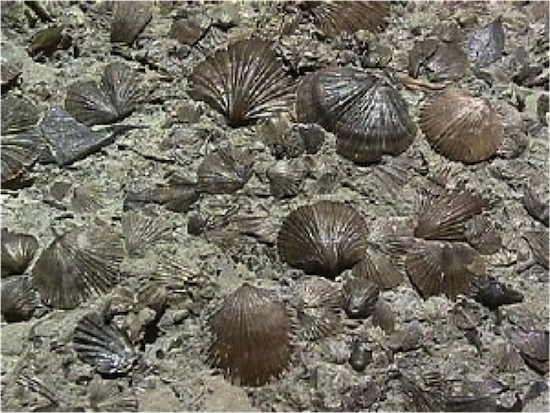
Brachiopoda Notes

Brachiopods, belong to the phylum Brachiopoda. They are marine animals that have hard "valves" on the upper and lower surfaces, unlike the left and right arrangement in bivalve molluscs.
Brachiopods live only in the sea. Most species avoid locations with strong currents or waves, and typical sites include rocky overhangs, crevices and caves, steep slopes of continental shelves, and in the bottoms of deep oceans. However, some articulate species attach to kelp or in exceptionally sheltered sites in intertidal zones. Young adults often attach to the shells of more mature ones. On the other hand, inarticulate brachiopods, whose larva swim for up to a month before settling, have wide ranges and may have a cosmopolitan distribution.
Brachiopod fossils have been useful indicators of climate changes during the Paleozoic era. When global temperatures were low, as in much of the Ordovician, the large difference in temperatures between equator and poles created different fossils at different latitudes. During warmer periods, such as much of the Silurian, there was smaller differences in sea temperatures, and all seas at the low to middle latitudes were colonized by the same few brachiopod species.
The earliest confirmed brachiopods have been found in the early Cambrian, inarticulate forms appearing first, followed soon after by articulate forms. At their peak during the Paleozoic the brachiopods were among the most abundant filter-feeders and reef-builders. After the Permian–Triassic extinction event, brachiopods recovered only a third of their former diversity.